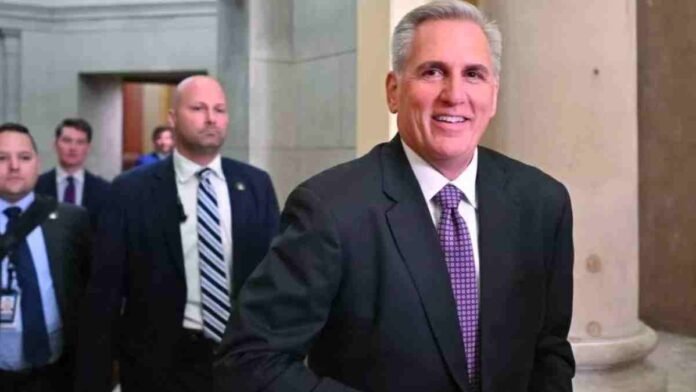The House of Representatives passed a bill to allow the US to borrow additional money, despite some defections, to avoid defaulting on its debt. Speaker McCarthy’s plan to lift the debt ceiling and save $1.5tn over a decade was passed despite bipartisan resistance, but the Senate may require Democratic and Republican votes again.
Days before the world’s largest economy defaults, the House of Representatives passed a bill to allow the US to borrow additional money. Despite some defections, the legislation passed 314-117. President Joe Biden must sign the bill once the Senate votes on it later this week.
On Monday, June 5, the government will reach its borrowing ceiling. Lawmakers are racing to avoid the US defaulting on its $31.4tn (£25tn) debt, which supports the global financial system.
Default would prevent the government from borrowing or paying its obligations. It might potentially disrupt global pricing and mortgage rates. The 99-page debt ceiling bill passed the House with a simple majority on Wednesday night after 165 Democrats and 149 Republicans supported it.
President Biden and House Speaker Kevin McCarthy reached a settlement over the weekend after weeks of negotiations with Republicans in control of the lower house and Democrats in the upper chamber and White House.
Mr. Biden commended the Speaker for good faith negotiations. “Neither side got everything it wanted,” stated the president. “That’s governing.” By passing a debt ceiling increase with a long list of conservative goals, Kevin McCarthy forced Joe Biden and hesitant Democrats to negotiate.
He then held his party together as he forged a less ambitious compromise with the president that marginally cut government spending growth and imposed some additional limitations on low-income help. A faction of hard-line conservatives threatened to remove Mr. McCarthy and force a new Speaker election.
By Wednesday, even the most outspoken were backing off. Republican voters endorsed Mr. McCarthy’s proposal. While hard-liners may moan, they do not have the backing or even a notion of someone to succeed Mr. McCarthy.
Congress’ spending limit, which limits the government’s borrowing, is suspended until January 1, 2025. The non-partisan Congressional Budget Office stated Tuesday that the plan will save $1.5tn over a decade.
After bipartisan resistance, the bill’s passage was in doubt. Ultra-conservative Republicans said they got too few concessions for lifting the debt ceiling. Democrats opposed requiring food aid recipients to work and initiating student loan repayments.
Despite calling the law the “second serving of Satan’s sandwiches,” Missouri Democrat Emanuel Cleaver voted for it. Hakeem Jeffries, the House Democratic leader, claimed his party rescued the Republican Speaker politically.
“Once again, House Democrats to the rescue to avoid a dangerous default,” added the New York lawmaker. “More Democrats voted for this ‘historic conservative victory’ than Republicans,” tweeted Arizona Republican Eli Crane, who pledged to defeat the plan. With backing from political centrists on both sides, Speaker McCarthy passed the bill despite Republicans’ 222-213 House majority.
He called it “the biggest cut and savings this Congress has ever voted for”. The bill may fail. The Senate may require Democratic and Republican votes again. Utah Republican Mike Lee has pledged to use “every procedural tool” to block the accord.
On Wednesday, left-wing Senator Bernie Sanders said he cannot “in good conscience” support the plan. Senate Democratic and Republican leaders are scrambling to get a bill to Mr. Biden this weekend before a default.
In 2011, Standard & Poor’s cut the US’s credit rating after it almost exceeded its debt cap. Before Wednesday’s vote, the Dow fell 0.4%, the S&P 0.6%, and the Nasdaq 0.6%.




